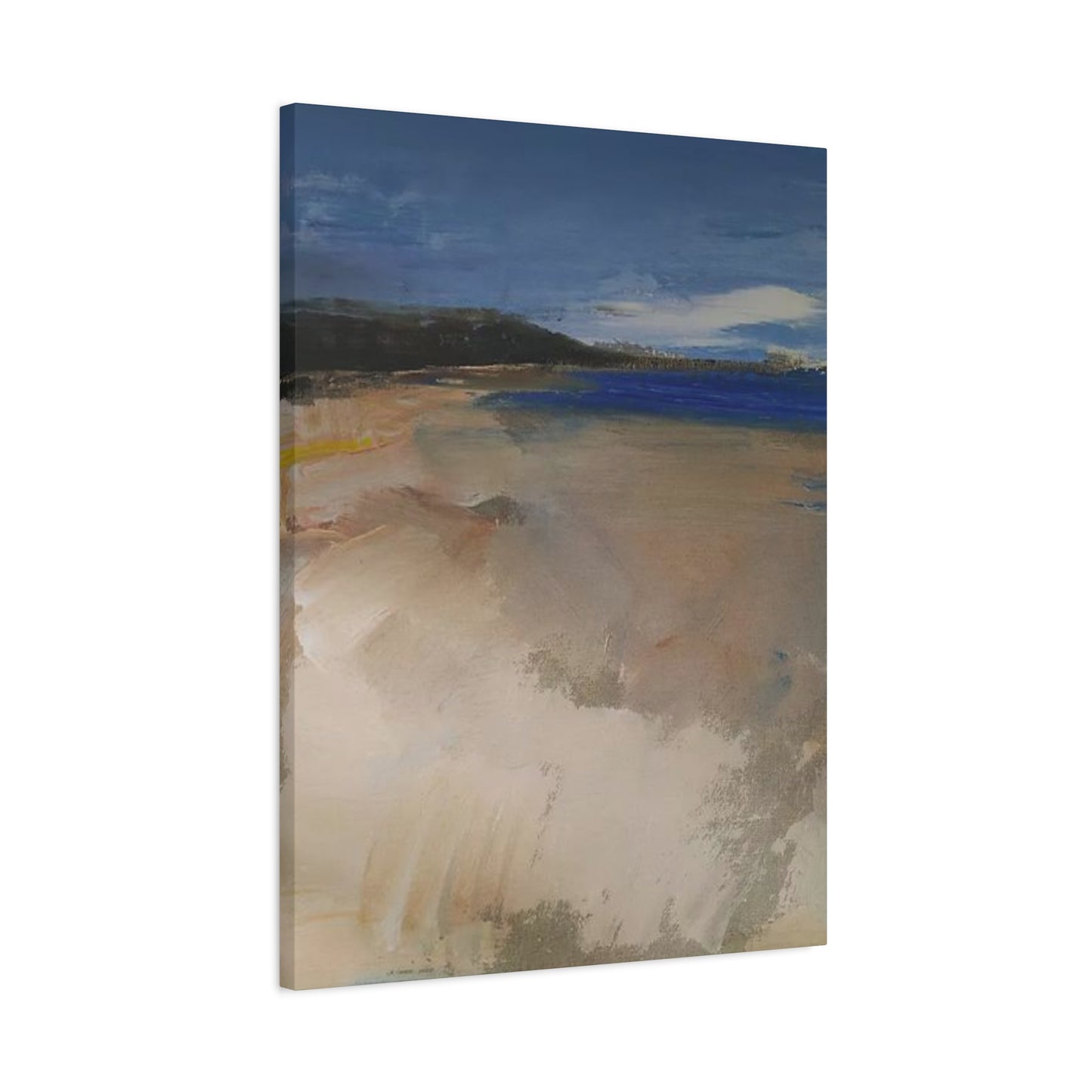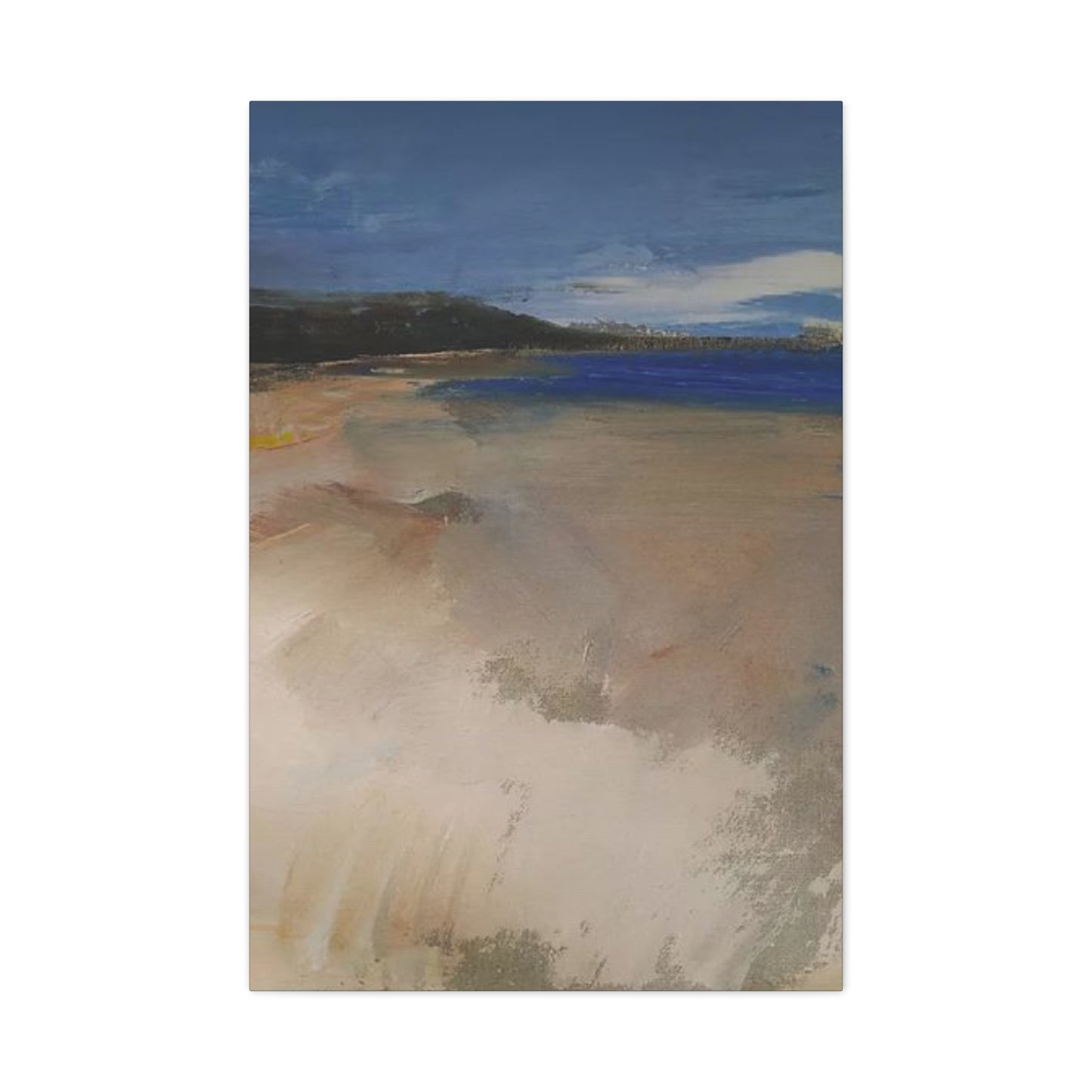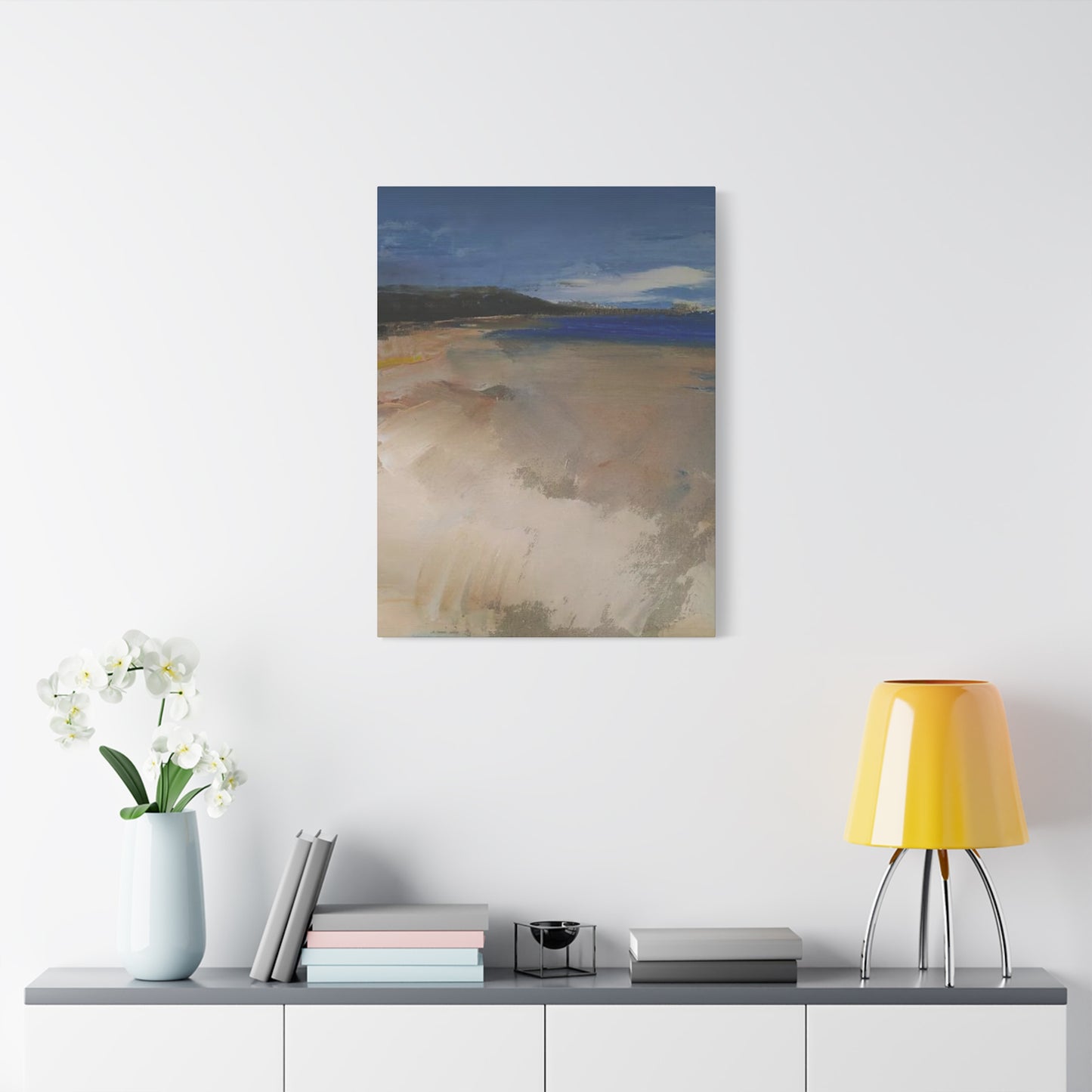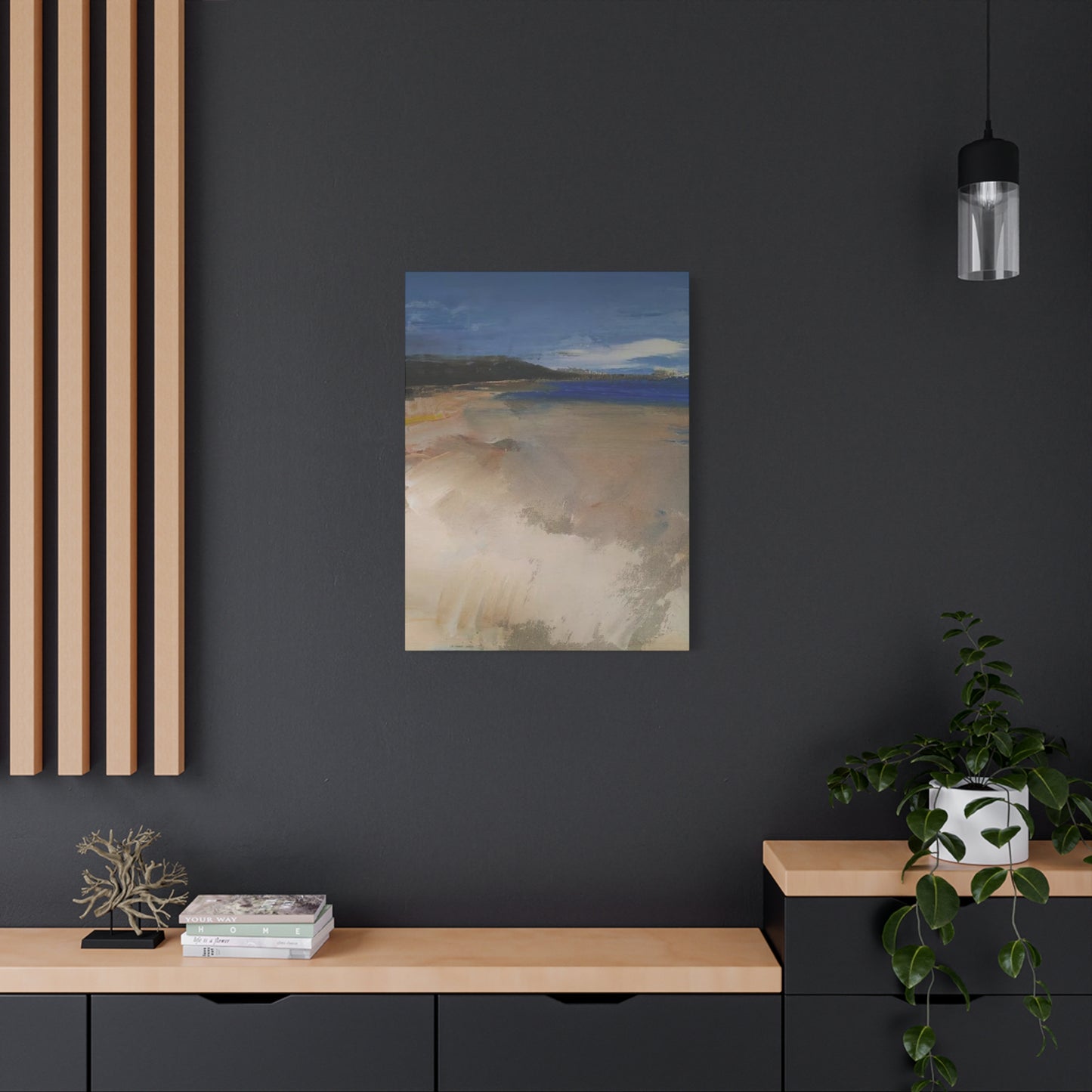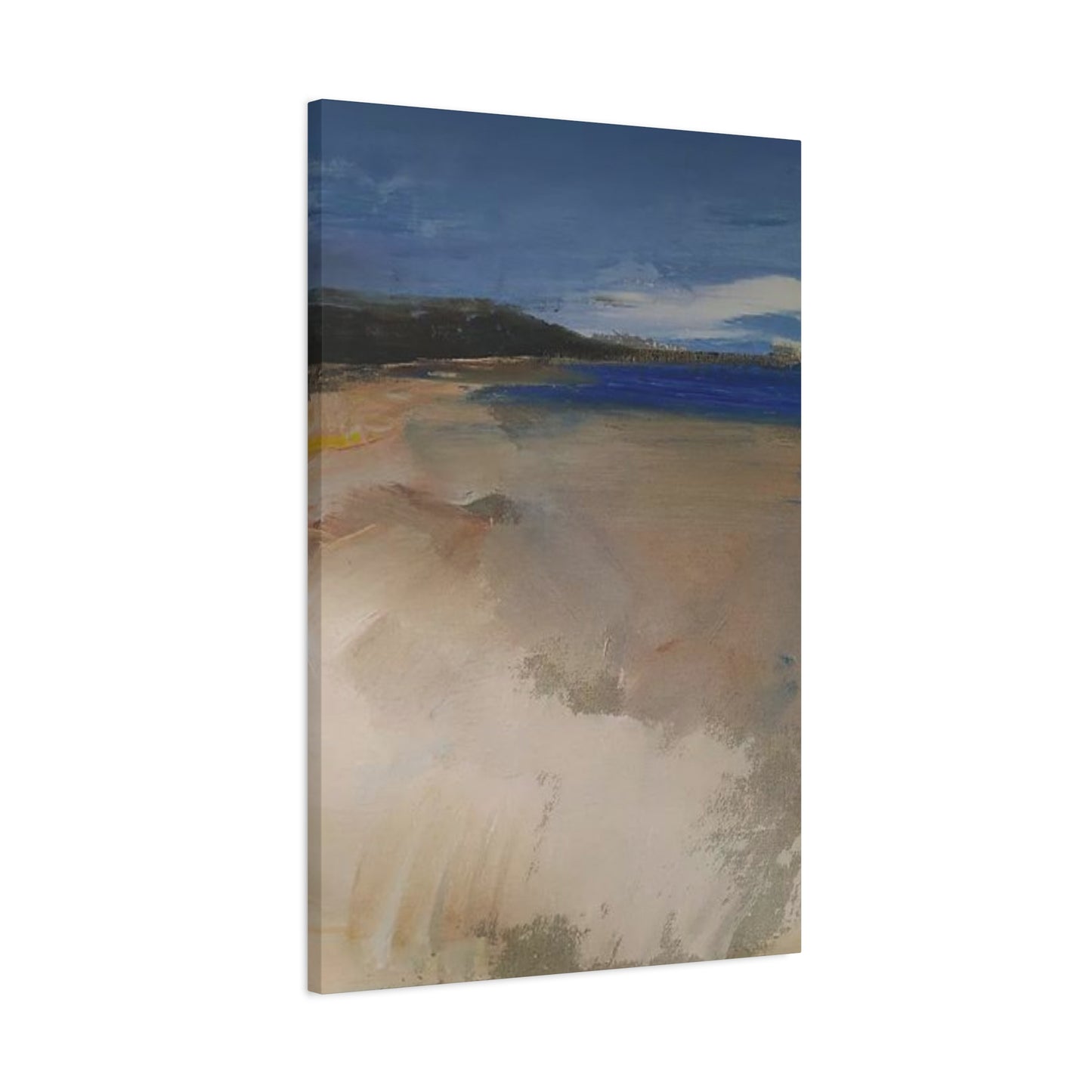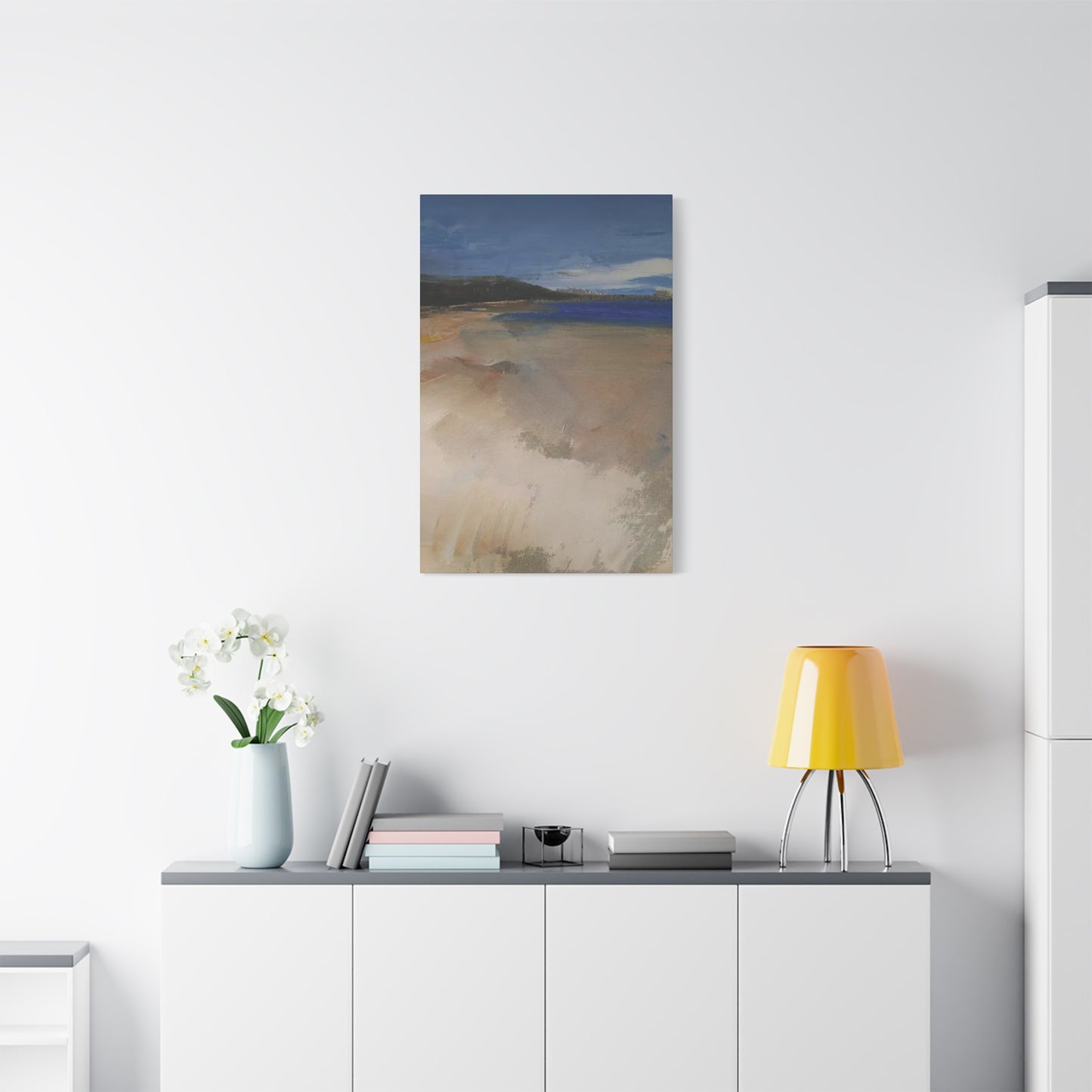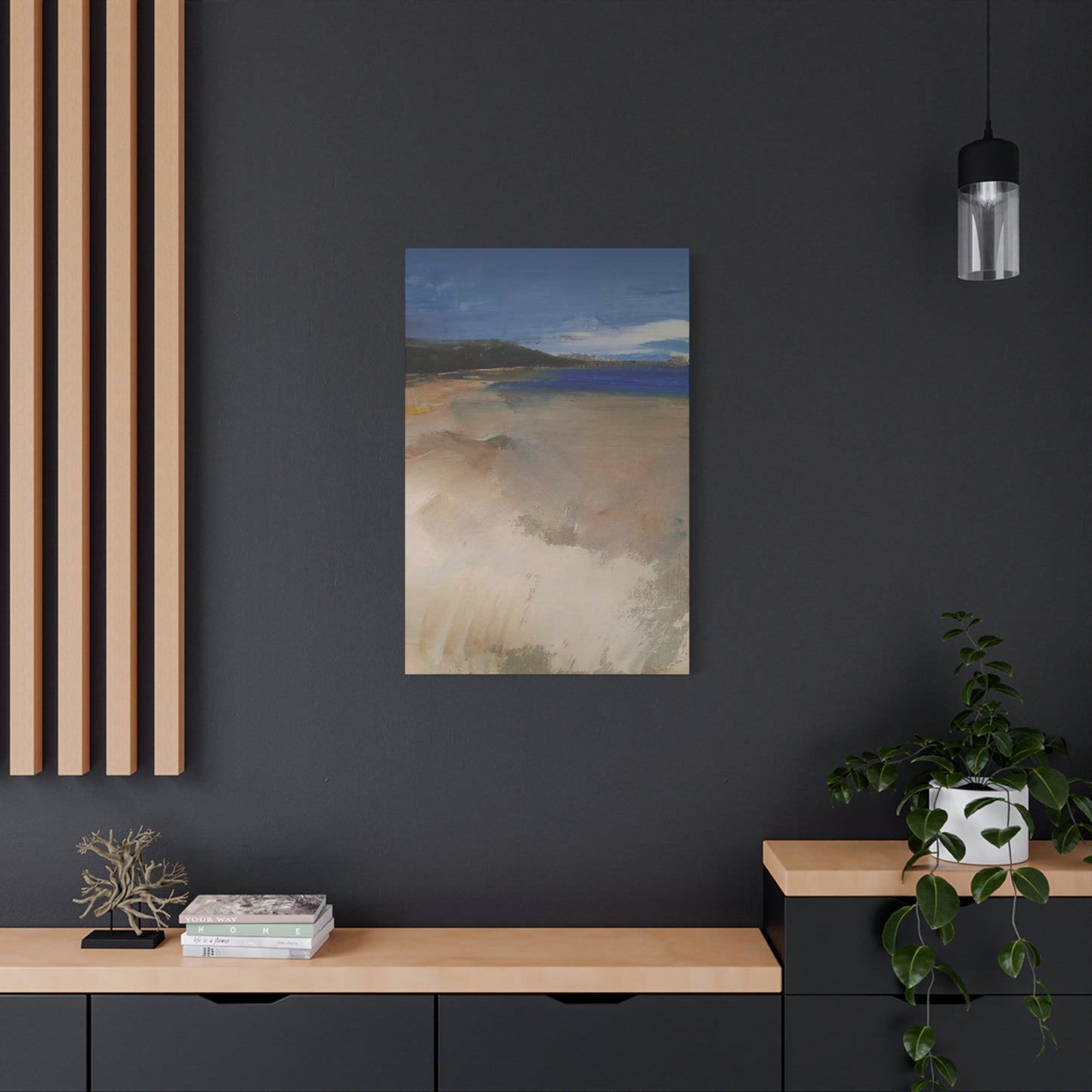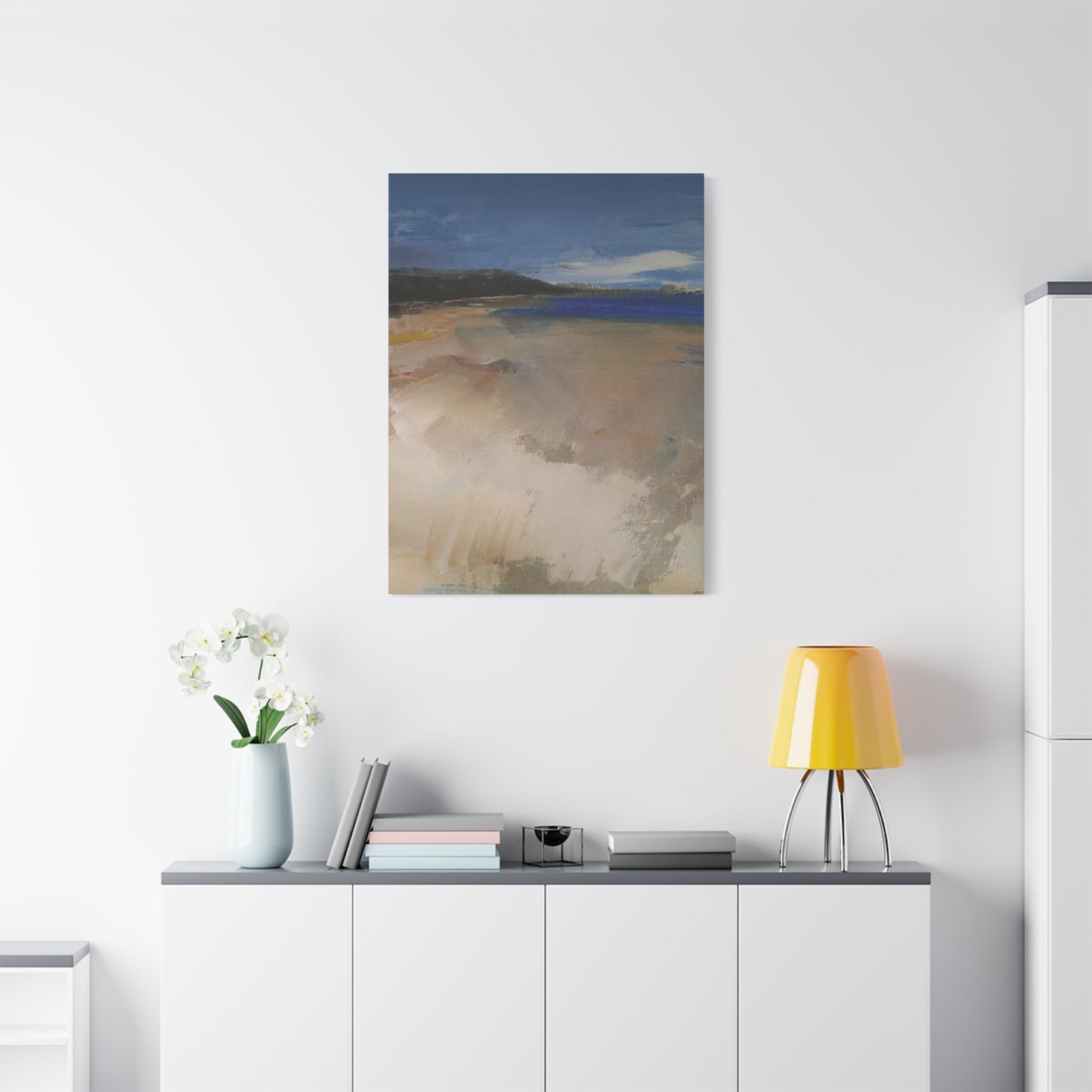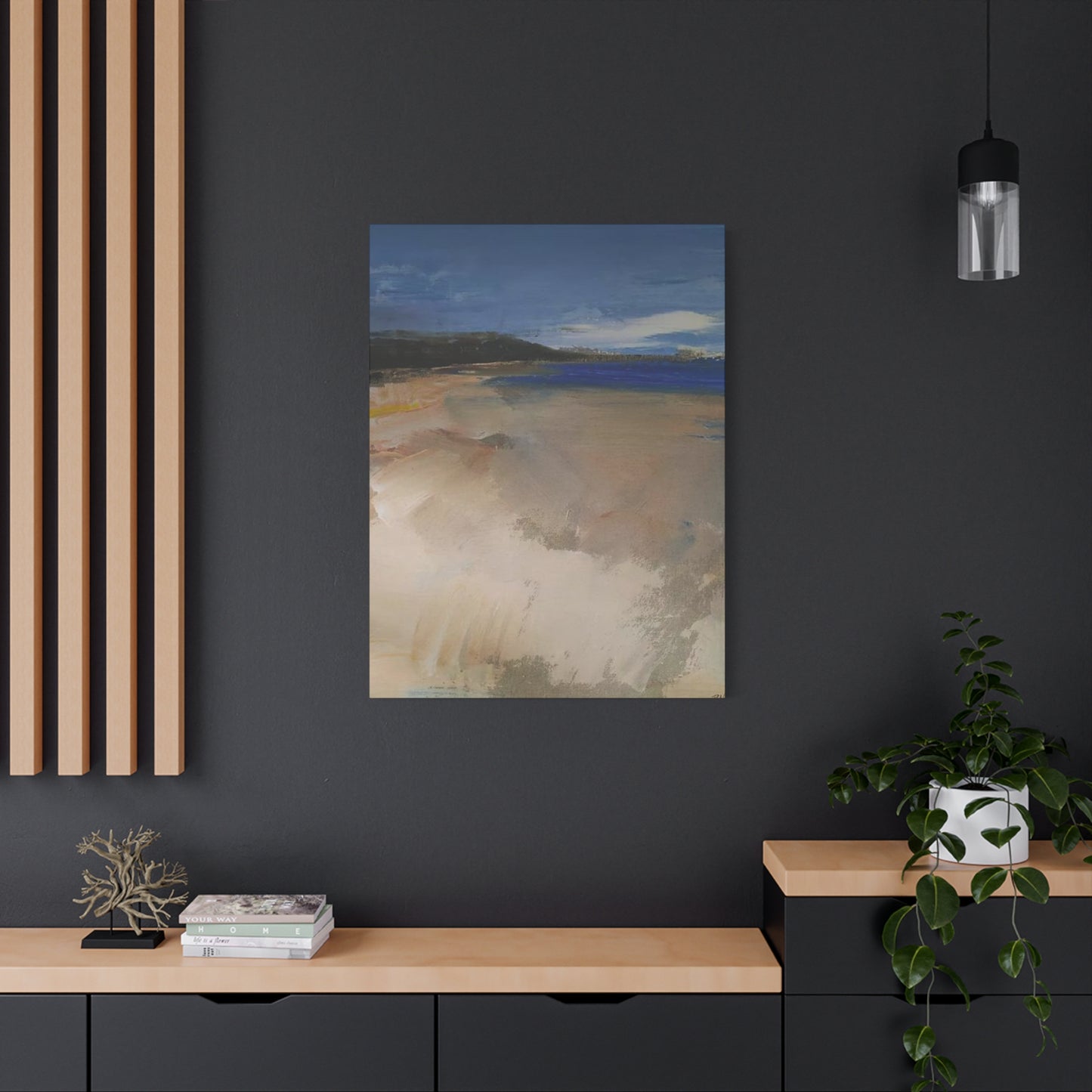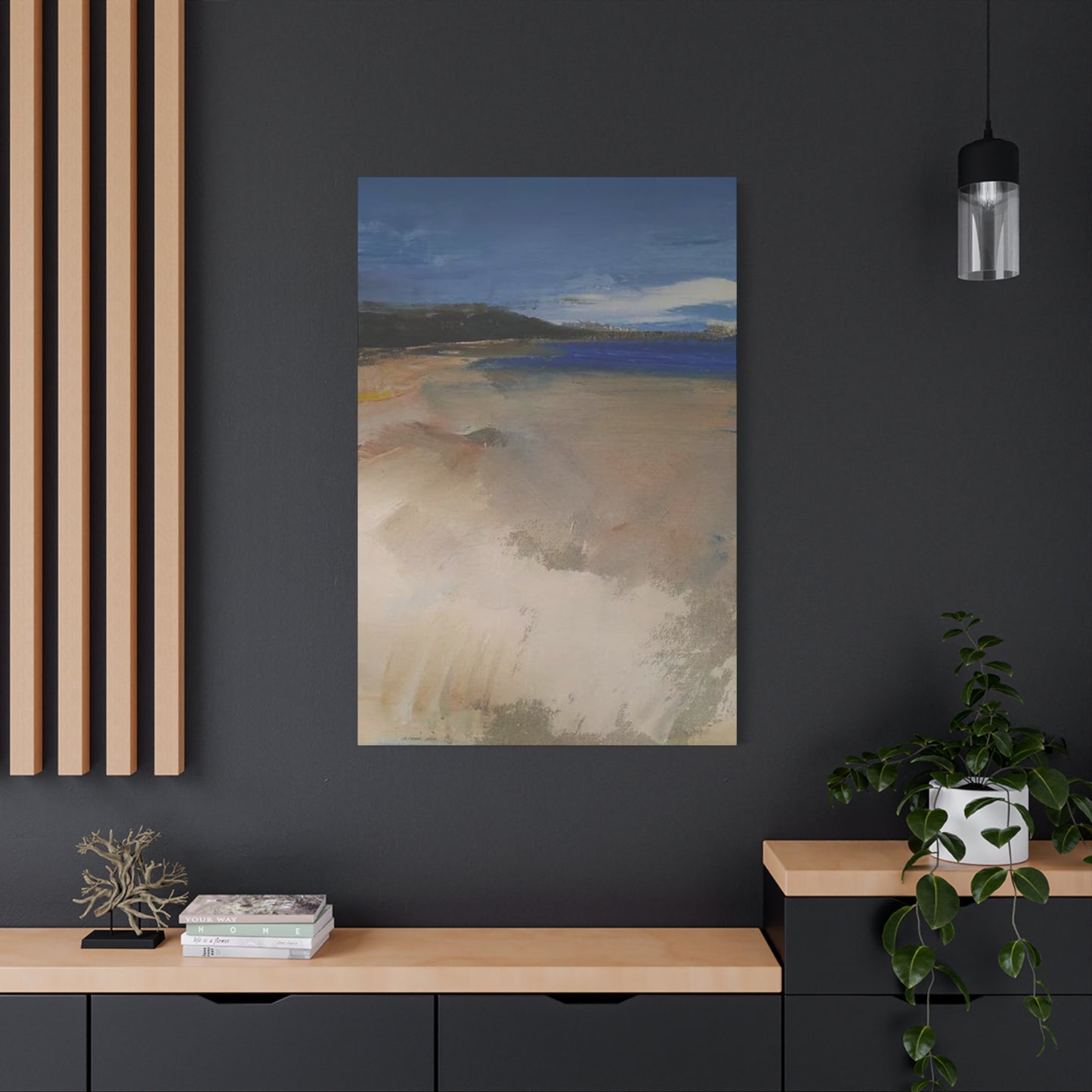Abstract Seashore fine Wall Art: Capturing the Harmony Between Land and Sea
Coastal abstract wall posters represent a sophisticated approach to interior design that captures the essence of oceanside living through artistic interpretation. These contemporary pieces blend the natural beauty of coastal environments with modern artistic expression, creating stunning focal points that transform any room into a serene retreat. The appeal of coastal abstract wall posters lies in their ability to evoke the calming presence of the sea while maintaining the visual sophistication demanded by modern interior aesthetics.
The artistic movement behind coastal abstract wall posters draws inspiration from the ever-changing moods of coastal landscapes, translating the rhythmic patterns of waves, the subtle color variations of beach sand, and the infinite horizons where sky meets sea into compelling visual narratives. Artists working in this medium often employ fluid brushstrokes, layered textures, and organic forms that mirror the natural erosion patterns found along coastlines, creating pieces that feel both familiar and mysteriously abstract.
When selecting coastal abstract wall posters for your space, consider the emotional response you wish to evoke. These pieces range from energetic compositions that capture the power of crashing waves to gentle, meditative works that reflect the peaceful moments of dawn on a quiet beach. The versatility of this art form allows for seamless integration into various interior design styles, from contemporary minimalism to bohemian coastal chic.
The color palettes typically associated with coastal abstract wall posters encompass the full spectrum of oceanic hues, from deep navy blues that represent the mysterious depths of the ocean to soft seafoam greens that capture the gentle lapping of waves on shore. Neutral tones such as sandy beiges, driftwood grays, and pearl whites provide sophisticated balance, ensuring these pieces complement rather than overwhelm existing decor elements.
Modern printing techniques have revolutionized the accessibility and quality of coastal abstract wall posters, allowing art enthusiasts to enjoy museum-quality reproductions at affordable prices. High-resolution digital printing on premium papers and canvases ensures that every subtle gradation and texture detail is preserved, bringing the artist's vision into your home with remarkable fidelity.
The psychological benefits of incorporating coastal abstract wall posters into living spaces cannot be overstated. Research in environmental psychology suggests that images evoking natural coastal environments can reduce stress levels, lower blood pressure, and promote feelings of tranquility and well-being. By choosing these pieces, you create not just visual interest but also contribute to a healthier, more relaxing living environment.
Installation considerations for coastal abstract wall posters extend beyond simple aesthetic placement. The interplay of natural and artificial lighting can dramatically affect how these pieces are perceived throughout the day. Positioning them where they can catch both morning sunlight and evening ambient lighting allows the colors and textures to shift and evolve, creating a dynamic visual experience that mirrors the ever-changing nature of coastal environments.
The market for coastal abstract wall posters continues to expand as more people seek to incorporate elements of nature into urban living spaces. This growth has led to increased diversity in artistic styles, from photorealistic interpretations of coastal scenes abstracted through digital manipulation to completely non-representational works that capture the emotional essence of coastal experiences through pure form and color.
Coastal abstract wall posters serve as conversation starters, inviting viewers to project their own coastal memories and experiences onto the artwork. This personal connection makes them particularly effective in residential settings where creating a welcoming, emotionally resonant atmosphere is paramount. The abstract nature of these pieces allows for multiple interpretations, ensuring they remain visually engaging over time as your perspective and appreciation evolve.
Ocean Wave Abstract Art: Capturing the Dynamic Energy of Marine Movement
Ocean wave abstract art represents one of the most compelling and dynamic forms of contemporary artistic expression, capturing the raw power, fluid motion, and infinite variety of oceanic forces through innovative visual techniques. This artistic genre transcends literal representation, instead focusing on the emotional and energetic qualities that make ocean waves such a universally captivating natural phenomenon. Artists working in this medium employ various techniques to convey the sense of movement, power, and beauty inherent in ocean waves while maintaining the conceptual freedom that abstract art provides.
The creative process behind ocean wave abstract art often begins with careful observation of actual wave patterns, studying how light reflects off moving water, how foam creates texture against darker waters, and how the rhythmic patterns of wave formation create natural compositions. However, unlike realistic marine art, abstract interpretations prioritize emotional impact over literal accuracy, allowing artists to exaggerate, distort, and reimagine these natural forms to create more powerful visual statements.
Color selection in ocean wave abstract art plays a crucial role in conveying both the physical characteristics and emotional qualities of marine environments. Deep indigos and midnight blues suggest the mysterious depths from which waves emerge, while brilliant whites and pale yellows capture the explosive energy of crashing surf. Turquoise and aquamarine tones evoke tropical waters, while gray-green palettes suggest the moody atmosphere of stormy seas. The interplay of these colors creates visual rhythms that mirror the actual movement of waves.
Texture techniques in ocean wave abstract art vary widely among artists and mediums. Oil painters might use palette knife techniques to create thick, sculptural surfaces that physically project from the canvas, mimicking the three-dimensional quality of actual waves. Watercolor artists exploit the medium's natural flow properties to create organic, unpredictable patterns that echo water's inherent fluidity. Digital artists can layer transparent elements to create depth and complexity that would be difficult to achieve through traditional means.
The emotional resonance of ocean wave abstract art stems from humanity's deep psychological connection to water and oceanic environments. Waves represent constant change, power, and the cyclical nature of life itself. Abstract interpretations of these forms tap into these universal associations while allowing viewers to project their own experiences and emotions onto the artwork. This personal connection makes ocean wave abstract art particularly effective in creating meaningful, lasting relationships between viewers and artworks.
Contemporary ocean wave abstract art often incorporates mixed media approaches, combining traditional painting techniques with photography, digital manipulation, and even sculptural elements. These hybrid approaches allow artists to explore new ways of representing the complex visual and tactile qualities of ocean waves, creating pieces that engage multiple senses and challenge traditional boundaries between artistic mediums.
The scale of ocean wave abstract art significantly impacts its visual and emotional effect. Large-format pieces can create immersive experiences that make viewers feel surrounded by oceanic energy, while smaller works offer intimate glimpses into specific moments of wave formation or collapse. Series-based approaches allow artists to explore the temporal aspect of wave movement, creating sequences that suggest motion through static images.
Installation and presentation considerations for ocean wave abstract art require careful attention to lighting and spatial relationships. The reflective qualities inherent in many of these works mean that lighting can dramatically alter their appearance throughout the day. Natural lighting that changes intensity and color temperature can make these pieces appear to move and shift, enhancing their connection to the dynamic nature of actual ocean waves.
The therapeutic qualities of ocean wave abstract art have made them popular choices for healthcare facilities, wellness centers, and residential spaces designed for relaxation and stress reduction. The flowing forms and oceanic color palettes naturally promote feelings of calm and contemplation, while the abstract nature allows viewers to engage with the work on their own terms without being constrained by literal interpretation.
Market trends in ocean wave abstract art reflect broader interests in environmental consciousness and biophilic design principles. As more people seek to reconnect with natural environments through their living spaces, demand for artwork that captures the essence of natural phenomena continues to grow. This has led to innovations in printing technology and materials that make high-quality reproductions more accessible to broader audiences.
The educational value of ocean wave abstract art extends beyond aesthetic appreciation to include discussions about environmental stewardship, the physics of wave formation, and the role of abstraction in artistic expression. These pieces can serve as starting points for conversations about climate change, ocean conservation, and the importance of preserving marine environments for future generations.
Beach Horizon Line Art: Exploring the Infinite Meeting of Earth and Sky
Beach horizon line art focuses on one of nature's most fundamental and philosophically significant visual elements: the line where earth meets sky, where the tangible world of sand and surf encounters the infinite expanse of atmosphere and space. This artistic genre explores the conceptual and visual power of this simple yet profound boundary, using abstract interpretation to reveal the deeper meanings and emotional resonances contained within this universal coastal experience.
The horizon line has captivated artists throughout history, serving as both a compositional tool and a metaphorical device for exploring themes of infinity, possibility, and the human relationship with the sublime. In beach horizon line art, this element takes on additional layers of meaning, as the presence of sand, water, and coastal atmosphere creates a unique environmental context that influences how we perceive and interpret this fundamental visual boundary.
Abstract interpretations of beach horizon lines often play with traditional perspective rules, sometimes eliminating the line entirely to create ambiguous spatial relationships, other times multiplying it to suggest movement or temporal progression. Artists might curve straight lines to suggest the earth's curvature or fragment them to imply the disruption of natural order. These manipulations challenge viewers' expectations and invite deeper contemplation of what horizons represent in human experience.
Color treatment in beach horizon line art varies dramatically based on the emotional and atmospheric qualities artists wish to convey. Dawn and dusk scenarios offer opportunities to explore warm palettes of oranges, pinks, and purples that bleed across the boundary between earth and sky. Midday compositions might emphasize the stark contrast between bright blue skies and white sand beaches. Stormy conditions allow for exploration of darker, more dramatic color relationships that suggest nature's power and unpredictability.
The minimalist tendencies often associated with horizon line compositions align naturally with contemporary design preferences for clean, uncluttered aesthetic approaches. Beach horizon line art can provide powerful focal points without overwhelming surrounding decor elements, making them particularly suitable for modern interior environments where visual restraint is valued alongside emotional impact.
Light plays a particularly crucial role in beach horizon line art, as the horizon itself is often defined more by light quality than by distinct physical boundaries. Artists working in this genre must master the subtle gradations and atmospheric effects that occur along coastal horizons, where humidity, salt air, and varying light conditions create unique visual phenomena that differ from inland horizon experiences.
The conceptual framework of beach horizon line art often extends beyond mere landscape representation to explore philosophical themes of boundary, transition, and the relationship between finite and infinite experiences. The beach horizon serves as a meditation on limit and limitlessness, offering viewers a visual anchor for contemplating their place within larger natural systems and cosmic relationships.
Digital art techniques have opened new possibilities for exploring beach horizon lines, allowing artists to create impossible or surreal horizon relationships that would be difficult to achieve through traditional media. These approaches might involve multiple horizon lines, gravitational reversals, or color relationships that exist only in digital space, expanding the conceptual boundaries of what horizon line art can explore and express.
The temporal aspect of beach horizons provides rich material for artistic exploration, as these boundaries shift throughout the day with changing light, weather, and tidal conditions. Some artists create series that document these changes over time, while others attempt to capture multiple temporal states within single compositions, creating complex visual narratives about the passage of time in coastal environments.
Viewing distance significantly affects the impact of beach horizon line art. Pieces designed for close viewing might emphasize texture and surface quality, while works intended for viewing from greater distances might prioritize bold color relationships and simplified forms. This scalability makes horizon line art suitable for various architectural contexts, from intimate residential spaces to large public installations.
The psychological effects of beach horizon line art often relate to feelings of freedom, possibility, and contemplation. The horizon represents the edge of the known world, suggesting adventure and discovery while simultaneously providing a stable visual reference point. Abstract interpretations of these themes can evoke these feelings without requiring literal representation, making them accessible to viewers regardless of their direct experience with coastal environments.
Cultural interpretations of beach horizon lines vary significantly across different societies and historical periods, providing rich material for artistic exploration. Some cultures view the horizon as a spiritual boundary, others as a practical navigation reference. Abstract art can explore these varied meanings without being constrained by specific cultural references, creating universal visual experiences that resonate across diverse backgrounds.
Contemporary environmental concerns add additional layers of meaning to beach horizon line art, as rising sea levels and coastal erosion threaten many of the physical locations these works reference. Artists working in this genre increasingly address themes of environmental change and loss, using abstract techniques to explore these complex emotional and political territories.
Blue Tones Beach Abstracts: Mastering the Spectrum of Oceanic Color
Blue tones beach abstracts represent a sophisticated exploration of color relationships within the oceanic spectrum, demonstrating how variations within a single color family can create rich, complex, and emotionally resonant artistic experiences. This approach to coastal abstract art recognizes blue not as a single color but as an infinite range of hues, saturations, and values that can capture the full emotional and visual range of beach and ocean experiences.
The psychology of blue in artistic contexts has been extensively studied, with research consistently showing its associations with calm, trust, stability, and contemplation. In beach abstract art, these inherent qualities of blue are enhanced by specific coastal associations: the vastness of ocean waters, the infinite expanse of coastal skies, and the peaceful qualities of seaside environments. Artists working with blue tones beach abstracts tap into these deep psychological connections while exploring the subtle variations that make each blue unique and meaningful.
Color theory principles become particularly important when working within limited color palettes, as artists must rely on subtle variations in hue, saturation, and brightness to create visual interest and emotional depth. Cool blues might suggest deep ocean waters or overcast skies, while warmer blue-green combinations evoke tropical lagoons or shallow coastal waters. The interplay between different blue values creates spatial depth and atmospheric perspective that can make abstract compositions feel vast and immersive.
Monochromatic blue compositions challenge artists to create visual interest through texture, form, and subtle color variation rather than relying on contrasting color relationships. This constraint often leads to innovative approaches to surface treatment, brushwork, and compositional structure. Artists might use glazing techniques to create luminous depth, or employ impasto methods to create textural contrast that catches and reflects light in various ways.
The technical aspects of working with blue pigments present both opportunities and challenges for artists. Different blue pigments have varying properties regarding mixing behavior, lightfastness, and transparency. Ultramarine blues offer rich, deep tones but can become muddy when mixed carelessly. Prussian blues provide intense, almost electric qualities but can overpower more subtle colors. Understanding these technical properties allows artists to make informed choices about which blues will best serve their artistic vision.
Digital art techniques have expanded the possibilities for exploring blue tone relationships in beach abstracts, allowing for precise color control and the ability to create subtle gradations that might be difficult to achieve through traditional media. Digital tools can create perfectly smooth gradients or complex color relationships that blend multiple blue sources in mathematically precise ways, opening new possibilities for color exploration and expression.
The environmental context of blue tones beach abstracts often reflects specific coastal conditions and lighting situations. Morning blues might be soft and misty, reflecting the gentle light of dawn over calm waters. Afternoon blues could be brilliant and saturated, capturing the intense light and color of midday sun on tropical seas. Evening blues might incorporate purple undertones that suggest the transition toward sunset, creating more complex color relationships within the blue family.
Texture techniques in blue tones beach abstracts serve to enhance color relationships and create surface interest that compensates for the limited color palette. Dry brush techniques can suggest the texture of wind-blown sand or the surface of choppy water. Sponging or dabbing techniques might evoke the organic patterns of foam or the dappled light effects created by sunlight filtering through water. These textural approaches add visual and tactile interest while maintaining color coherence.
The meditative qualities of blue tones beach abstracts make them particularly suitable for spaces designed for relaxation and contemplation. The inherently calming properties of blue colors, combined with abstract forms that don't demand literal interpretation, create artworks that can facilitate stress reduction and mental clarity. This has made them popular choices for wellness centers, meditation spaces, and residential bedrooms or home offices.
Layering techniques in blue tones beach abstracts allow artists to create complex color relationships and spatial depth while maintaining overall color harmony. Transparent glazes can create luminous effects that suggest the play of light through water, while opaque layers can provide solid visual anchors that ground more atmospheric passages. The interaction between transparent and opaque blue passages creates visual rhythms that can suggest the movement of water or the layered atmosphere of coastal environments.
The historical context of blue in marine art provides rich background for contemporary blue tones beach abstracts. From the intense ultramarines of medieval illuminated manuscripts to the innovative blue explorations of modern abstract expressionists, artists working in this tradition build upon centuries of exploration into blue's expressive possibilities. This historical foundation provides both inspiration and technical knowledge that can inform contemporary approaches to blue-based coastal abstraction.
Compositional strategies in blue tones beach abstracts often rely on subtle value relationships and organic forms rather than dramatic color contrasts. The eye must work more actively to discover compositional relationships, creating more contemplative viewing experiences. This can make these pieces particularly rewarding for extended viewing, as subtle relationships and details emerge gradually rather than demanding immediate attention.
The commercial appeal of blue tones beach abstracts relates partly to blue's widespread popularity in interior design contexts. Blue coordinates well with many existing color schemes while providing enough visual interest to serve as focal points. The abstract nature of these pieces allows them to complement various decorative styles without conflicting with specific thematic requirements.
Minimalist Coastal Abstracts: The Art of Simplified Seaside Expression
Minimalist coastal abstracts represent the intersection of contemporary minimalist art principles with the eternal appeal of coastal imagery, creating works that distill the essence of seaside experiences into their most essential visual elements. This approach prioritizes clarity, simplicity, and emotional directness over complex detail or literal representation, resulting in artworks that achieve maximum impact through minimal means.
The philosophical foundations of minimalist coastal abstracts draw from both minimalist art theory and the inherent simplicity often found in coastal landscapes. The vast expanses of sky and water, the clean lines of horizons, and the organic simplicity of beach forms naturally align with minimalist aesthetic principles. Artists working in this genre seek to identify and emphasize these inherently minimal qualities while stripping away unnecessary details that might distract from the essential experience.
Color palettes in minimalist coastal abstracts typically employ limited selections that maximize impact while maintaining visual coherence. A composition might use only two or three colors, relying on their relationship and the quality of their application to create visual interest. Neutral tones such as whites, grays, and beiges often dominate, punctuated by single accent colors that might reference specific coastal elements such as sky blue or sandy yellow.
Compositional strategies in minimalist coastal abstracts often involve careful consideration of negative space, which becomes as important as positive elements in creating overall visual balance. Large areas of unmodulated color or tone can suggest the vastness of ocean or sky, while small, precisely placed elements provide focal points that anchor the composition without overwhelming its essential simplicity.
The execution techniques employed in minimalist coastal abstracts require high levels of technical skill precisely because there are fewer elements to hide behind. Each brushstroke, color transition, and compositional decision becomes crucial to the work's success. Clean edges might be essential in some areas, while subtle gradations in others could provide the atmospheric qualities necessary to suggest coastal environments.
Material choices in minimalist coastal abstracts often emphasize quality over complexity. High-grade papers, canvases, or other supports become more important when there are fewer visual elements to distract from surface quality. Similarly, color quality becomes crucial when working with limited palettes, as each color must perform multiple functions within the composition.
The viewing experience of minimalist coastal abstracts tends to be more contemplative than dramatic, inviting quiet observation rather than immediate emotional impact. These pieces reward extended viewing, as subtle relationships and qualities emerge gradually. This contemplative quality makes them particularly suitable for spaces designed for reflection, study, or relaxation.
Scale considerations play important roles in minimalist coastal abstracts, as the relationship between the artwork and its surrounding space significantly affects its impact. Large-scale minimal works can create immersive experiences that envelop viewers in their simplified coastal atmosphere. Smaller works might function more like visual haikus, providing concentrated doses of coastal essence in compact formats.
The educational value of minimalist coastal abstracts extends beyond aesthetic appreciation to include lessons about visual perception, the power of suggestion, and the importance of restraint in artistic expression. These works demonstrate how much can be communicated through minimal means, challenging viewers to become more active participants in the meaning-making process.
Contemporary interior design trends toward simplification and decluttering have increased appreciation for minimalist coastal abstracts, as they provide sophisticated visual interest without contributing to visual clutter. They can serve as calming focal points in busy environments or as subtle additions to already minimal spaces.
The technical challenges of creating successful minimalist coastal abstracts often center around achieving the right balance between simplicity and visual interest. Too much simplicity can result in boring or empty compositions, while too much detail defeats the minimalist purpose. Artists must develop sensitivity to these subtle balance points through experimentation and refined aesthetic judgment.
Digital production of minimalist coastal abstracts offers unique advantages, as digital tools can create perfectly clean edges, subtle gradations, and precise color relationships that might be difficult to achieve through traditional media. However, the challenge lies in maintaining the human quality and emotional resonance that gives art its power, rather than creating sterile, mechanical-looking results.
The market appeal of minimalist coastal abstracts reflects broader cultural trends toward simplification and mindfulness. As people seek to reduce complexity in their lives, artworks that embody these principles while maintaining beauty and meaning become increasingly attractive. This has created growing demand for sophisticated minimal works that offer substance beyond mere simplicity.
Textured Beach Wall Decor: Adding Dimensional Depth to Coastal Aesthetics
Textured beach wall decor represents an innovative approach to coastal art that engages multiple senses while creating visually compelling and tactilely interesting surface treatments. This genre extends beyond traditional flat art approaches by incorporating three-dimensional elements, varied surface treatments, and materials that reference the actual physical qualities of coastal environments, creating artworks that viewers want to touch as well as see.
The development of textural techniques in beach-themed wall decor draws inspiration from the natural textures found in coastal environments: the rough bark of driftwood weathered by salt and sun, the smooth surfaces of sea glass polished by constant wave action, the intricate patterns created by wind-blown sand, and the complex surface variations found in shells and coral formations. Artists translate these natural textures into artistic media through various techniques and materials.
Mixed media approaches in textured beach wall decor allow artists to incorporate actual coastal materials alongside traditional artistic media. Sand might be mixed with paint to create authentic beach-like surfaces, shells and sea glass could be embedded in compositions, or driftwood pieces might form structural elements within larger artistic compositions. These approaches create direct physical connections to coastal environments while maintaining artistic sophistication.
Relief techniques in textured beach wall decor create dimensional variations that catch and reflect light in changing ways throughout the day, making these pieces dynamic and alive. Plaster or modeling paste applications can create wave-like undulations, while carved or built-up areas might suggest rock formations or coral structures. These dimensional variations add visual interest and create shadow patterns that enhance the overall composition.
The interplay between texture and color in beach wall decor creates complex visual relationships that engage viewers on multiple levels. Textured surfaces can make colors appear different than they would on smooth surfaces, as the play of light and shadow across dimensional variations affects color perception. Artists must consider these interactions when selecting color palettes and planning textural treatments.
Lighting considerations become particularly important with textured beach wall decor, as the dimensional qualities of these pieces make them highly sensitive to lighting conditions. Directional lighting can emphasize textural qualities and create dramatic shadow patterns, while diffused lighting might minimize texture effects while emphasizing color relationships. The placement of textured works should consider available lighting throughout the day to ensure optimal presentation.
The production techniques for textured beach wall decor often require specialized tools and materials beyond traditional painting supplies. Palette knives, texture rollers, sponges, and various found objects might be employed to create different surface effects. Some artists develop signature techniques using unconventional tools or materials that become recognizable elements of their artistic style.
Conservation considerations for textured beach wall decor can be more complex than for traditional flat artworks, as the dimensional elements may be more vulnerable to damage from handling, cleaning, or environmental factors. Proper framing and display techniques must account for the three-dimensional aspects while providing adequate protection.
The acoustic properties of textured beach wall decor can contribute to the overall environmental experience, as dimensional surfaces can affect sound reflection and absorption in subtle ways. While not primarily designed as acoustic treatments, these textural qualities can contribute to the overall sensory experience of coastal-themed interior spaces.
Custom textured beach wall decor offers opportunities for artists to create site-specific works that respond to particular architectural contexts or client requirements. The size, scale, and specific textural qualities can be tailored to complement existing interior elements while providing the desired coastal atmosphere and visual impact.
The therapeutic benefits of textured beach wall decor extend beyond visual appeal to include tactile engagement opportunities for appropriate viewing contexts. The desire to touch interesting textures is natural and can provide stress-relief benefits, though this must be balanced against conservation concerns in formal display situations.
Digital reproduction techniques for textured beach wall decor present unique challenges, as traditional photography and printing methods cannot capture the dimensional aspects that are crucial to these works' impact. Specialized printing techniques or hybrid approaches that combine digital imagery with applied textures may be necessary to create satisfactory reproductions.
The market positioning of textured beach wall decor often emphasizes the handcrafted, artisanal qualities that distinguish these pieces from mass-produced alternatives. The evident skill and time investment required to create complex textural effects contributes to perceived value and authenticity that appeals to collectors and interior design professionals.
Sunset Beach Abstract Prints: Capturing Golden Hour Magic in Abstract Form
Sunset beach abstract prints capture one of nature's most universally beloved spectacles through the lens of abstract artistic interpretation, transforming the ephemeral beauty of golden hour coastal light into permanent artistic statements that bring warmth, drama, and emotional resonance to interior spaces. This genre of coastal abstract art specifically focuses on the unique lighting conditions, color relationships, and atmospheric qualities that occur during the magical transition between day and night at seaside locations.
The color palette inherent in sunset beach abstracts presents artists with some of nature's most spectacular color relationships: the warm oranges and reds of the setting sun, the purple and pink hues that develop in twilight skies, the golden reflections that dance across wave surfaces, and the silhouetted forms of coastal features against brilliant backgrounds. Abstract interpretation of these colors allows artists to intensify, modify, and reimagine these relationships while maintaining their emotional impact.
Light quality becomes a central theme in sunset beach abstract prints, as the entire phenomenon of sunset is fundamentally about changing light conditions and their effects on color and atmospheric perception. Artists must capture not just specific colors but the quality of light itself: its warmth, its directional properties, and its ability to transform ordinary coastal scenes into extraordinary visual experiences.
The temporal aspect of sunsets provides rich conceptual material for abstract interpretation, as these events unfold over time with constantly changing colors, light angles, and atmospheric conditions. Some artists attempt to capture specific moments within this progression, while others try to synthesize the entire temporal experience into single compositions that suggest the passage of time and the dynamic nature of sunset phenomena.
Atmospheric perspective plays a crucial role in sunset beach abstracts, as the layered atmosphere that creates sunset colors also affects how we perceive spatial relationships and depth. Distant elements might appear as pure color shapes without detail, while foreground elements could be rendered as silhouettes against brilliant backgrounds. Abstract interpretation can emphasize these atmospheric effects while maintaining compositional coherence.
The emotional associations connected with sunset experiences add powerful psychological dimensions to abstract interpretations of these themes. Sunsets traditionally evoke feelings of romance, contemplation, completion, and natural beauty. Abstract approaches can tap into these associations while avoiding literal representation that might limit individual interpretation and emotional response.
Technical considerations in creating sunset beach abstract prints often center around color mixing and layering techniques that can capture the complex color relationships found in actual sunset conditions. Glazing techniques might create the luminous quality of sunset light, while bold, opaque passages could represent the dramatic contrast between bright sky and silhouetted landforms.
The printing and reproduction challenges for sunset beach abstract prints relate primarily to color fidelity, as the brilliant oranges, reds, and purples characteristic of sunsets can be difficult to reproduce accurately in print media. High-quality printing processes and careful color management become essential to maintaining the visual impact that makes these works effective.
Scale considerations for sunset beach abstract prints affect their emotional impact and viewing experience. Large-format prints can create immersive experiences that make viewers feel surrounded by sunset atmosphere, while smaller prints might function as intimate glimpses of sunset moments. The intended viewing distance and architectural context should influence scale decisions.
The seasonal and geographical variations in sunset conditions provide diverse source material for abstract interpretation. Tropical sunsets might emphasize brilliant oranges and reds, while northern coastal sunsets could focus on subtle purples and pinks. Desert coastal areas might produce different atmospheric effects than humid coastal regions, offering varied aesthetic possibilities for abstract exploration.
Contemporary environmental consciousness adds additional layers of meaning to sunset beach abstract prints, as these works can serve as celebrations of natural beauty that may be threatened by pollution, climate change, or coastal development. The abstract nature allows these environmental concerns to be addressed subtly rather than through heavy-handed literal representation.
The interior design applications of sunset beach abstract prints often focus on their ability to warm and energize spaces while maintaining sophisticated aesthetic appeal. The warm color palettes naturally complement both contemporary and traditional interior styles, while the abstract approach ensures they won't clash with existing decorative elements or become dated as literal landscape imagery might.
The commercial success of sunset beach abstract prints reflects their broad appeal across diverse demographic groups and their ability to evoke positive emotional responses. The universal human appreciation for sunset experiences creates market demand that extends beyond traditional art collecting into broader home decorating and gift markets.
Modern Coastal Abstract Canvases: Contemporary Approaches to Seaside Art
Modern coastal abstract canvases represent the cutting edge of contemporary coastal art, incorporating current artistic trends, innovative techniques, and contemporary aesthetic sensibilities while maintaining meaningful connections to coastal environments and experiences. This genre pushes the boundaries of traditional coastal art by embracing experimental approaches, unconventional materials, and conceptual frameworks that reflect current artistic discourse and cultural contexts.
The conceptual foundations of modern coastal abstract canvases often extend beyond simple landscape representation to engage with contemporary themes such as environmental change, urbanization of coastal areas, global connectivity, and the changing relationship between humans and natural environments. Artists working in this mode use coastal imagery as a starting point for broader explorations of contemporary life and cultural conditions.
Innovative material applications in modern coastal abstract canvases might include unconventional painting media, mixed media combinations, or even incorporation of technology-based elements. Some artists experiment with metallic paints that catch light in ways that reference the reflective quality of water, while others might incorporate transparent media that create layered depth effects suggesting atmospheric conditions or water clarity.
The scale ambitions of modern coastal abstract canvases often push toward either very large formats that create immersive environmental experiences or very small formats that require intimate, focused viewing. These scale choices reflect contemporary art world trends toward spectacle and intimacy as alternative strategies for engaging viewer attention in our media-saturated environment.
Digital integration in modern coastal abstract canvases might involve digital design development, hybrid digital-traditional production techniques, or incorporation of digital elements within traditional media compositions. Some artists use digital tools for preliminary composition development before executing works in traditional media, while others create hybrid works that combine digital printing with traditional painting techniques.
The gallery and exhibition context for modern coastal abstract canvases influences their conception and execution, as artists consider how these works will function within contemporary art spaces and alongside other current artistic production. This might influence decisions about scale, materials, conceptual approach, and presentation methods to ensure relevance within current artistic discourse.
Color theory applications in modern coastal abstract canvases often push beyond traditional coastal color palettes to explore unexpected color relationships that maintain conceptual connections to coastal themes while expanding visual possibilities. Fluorescent colors might reference artificial lighting in coastal urban areas, while unusual color combinations could suggest the effects of pollution or climate change on coastal environments.
Surface treatment innovations in modern coastal abstract canvases experiment with texture, transparency, and dimensional effects that create new visual experiences while maintaining connections to coastal phenomena. These might include creating actual dimensional elements that project from the canvas surface, or using materials that change appearance under different lighting conditions.
The critical reception and interpretation of modern coastal abstract canvases requires consideration of their position within current artistic and cultural contexts. Critics and viewers must evaluate these works not only for their aesthetic success but also for their contribution to ongoing conversations about art's role in addressing contemporary environmental, social, and cultural issues.
The production and distribution methods for modern coastal abstract canvases often incorporate contemporary approaches to art marketing and sales, including online galleries, social media promotion, and direct artist-to-collector sales. These new distribution channels influence how artists create and present their work to reach appropriate audiences.
Collaborative approaches in modern coastal abstract canvases might involve multiple artists working together, or partnerships between artists and other professionals such as environmental scientists, urban planners, or technology specialists. These collaborations can add layers of meaning and expertise that enhance the conceptual depth and cultural relevance of the resulting artworks.
The educational and institutional contexts for modern coastal abstract canvases include their use in academic settings where they can serve as examples of contemporary artistic approaches to environmental themes. Museums and educational institutions might collect and display these works as part of broader explorations of current artistic production and cultural responses to environmental issues.
The international and cross-cultural dimensions of modern coastal abstract canvases reflect the global nature of contemporary art production and environmental concerns. Artists from different coastal regions worldwide contribute varied perspectives and cultural contexts to this genre, creating a rich international dialogue about shared coastal experiences and concerns.
Seashore Abstract Wall Art:
Seashore abstract wall art focuses specifically on the transitional zone where land meets sea, exploring the unique environmental conditions, visual phenomena, and symbolic meanings found in this dynamic boundary area. This genre of coastal abstract art pays particular attention to the constant interaction between terrestrial and marine elements, creating artistic interpretations that capture both the physical and metaphysical qualities of shoreline environments.
The ecological richness of seashore environments provides abundant source material for abstract interpretation, as these areas contain some of the most diverse and dynamic natural systems on Earth. Tide pools with their intricate micro-ecosystems, wave-carved rock formations, shifting sand patterns, and the constant cycle of tidal advance and retreat all offer compelling visual and conceptual material for artistic exploration.
The geological processes visible in seashore environments create natural abstract compositions through erosion, deposition, and the constant reshaping of coastal landforms. Artists working in seashore abstract wall art often study these natural processes and incorporate their visual and conceptual qualities into artistic compositions. The patterns created by water flow across sand, the stratified layers visible in eroded cliffs, and the smooth curves created by wave action all provide inspiration for abstract form development.
Color relationships in seashore abstract wall art must account for the unique lighting conditions found in these boundary environments, where light reflects off both water and land surfaces, creating complex color interactions. The colors of wet sand differ significantly from dry sand, while the presence of seaweed, shells, and other organic materials creates subtle color variations that can be abstracted into sophisticated artistic color schemes.
The temporal variations inherent in seashore environments provide rich material for artistic exploration, as these areas change dramatically with tidal cycles, seasonal conditions, and weather patterns. Some artists create series that document these changes over time, while others attempt to synthesize multiple temporal states into single compositions that suggest the dynamic nature of these environments.
Conclusion
Abstract Seashore Fine Wall Art masterfully captures the serene beauty and rhythmic harmony between land and sea, transforming interiors into tranquil and visually engaging spaces. Through abstract interpretation, these artworks blend fluid forms, layered textures, and harmonious color palettes to evoke the movement of waves, the softness of sand, and the ethereal quality of coastal light. By emphasizing mood, flow, and emotional resonance rather than literal representation, abstract seashore art allows viewers to experience the calming essence of the shoreline in a fresh and contemporary way. This type of wall art appeals to nature enthusiasts, art collectors, and interior designers seeking to infuse spaces with serenity, sophistication, and aesthetic depth.
Incorporating abstract seashore wall art into interiors creates environments that are peaceful, inviting, and visually stimulating. In living rooms, bedrooms, or relaxation areas, these pieces serve as captivating focal points, fostering a sense of calm and reflection. In offices, studios, or wellness spaces, they enhance focus, creativity, and mindfulness by evoking the soothing rhythm of the ocean. The versatility of abstract seashore designs ensures they complement a variety of décor styles—from minimalist and modern to coastal, Scandinavian, or eclectic interiors—adding elegance, color harmony, and a subtle sense of movement to any room.
The artistry behind abstract seashore fine wall art emphasizes composition, texture, and the interplay of color and light. Artists often employ fluid brushstrokes, layering techniques, and gradient washes to recreate the natural energy and serenity of the shoreline while maintaining an abstract aesthetic. The result is artwork that conveys both motion and tranquility, inviting viewers to interpret and connect with the imagery on a personal and emotional level. Each piece becomes more than decoration; it is a meditative experience, a visual escape, and a celebration of nature’s subtle rhythms.
Ultimately, Abstract Seashore Fine Wall Art elevates interiors by merging natural inspiration with contemporary artistic expression. It transforms walls into serene and captivating spaces that celebrate the delicate balance between land and sea. By featuring this artwork, individuals can bring a sense of calm, beauty, and visual sophistication into their homes, offices, or creative spaces—making it a timeless and evocative addition to any interior décor.

















